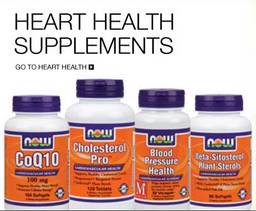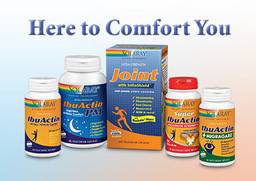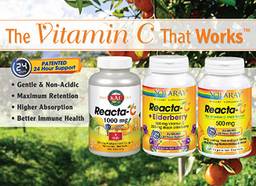|
Search Term: " Nat. "
Tru-E Bio Complex
Date:
December 08, 2005 04:58 PM
Tru-E Bio Complex TMNeil E. Levin, CCN, DANLA 7/27/05LIKELY USERS: Most Americans are deficient in Vitamin E 8,9,10; People needing superior antioxidant protection3,5,6; People needing cardiovascular or cholesterol support27,30,31; People needing nervous system support7; Those wanting healthier skin6; Diabetics may need additional Vitamin E24 KEY INGREDIENTS: Tocopherols from IP-Preserved, non-GMO Soy; Tocotrienols and tocopherols from non-GMO virgin palm; Tocotrienols from non-GMO anNat.o seed MAIN PRODUCT FEATURES: NOW Tru-E Bio ComplexTM is a unique biologically balanced, patent-pending formula designed to provide optimal Vitamin E activity. This product features 100% Nat.ral, Non-Genetically Modified sources of all 8 isomers (forms) of the Vitamin E “family” in ratios similar to what is found in a healthy diet. It provides the superior benefits of foodsource Vitamin E versus those obtained from traditional E supplements. NOW® Tru-E Bio ComplexTM has been carefully blended to supply high levels of the Nat.ral gamma and delta “desmethyl” forms of both tocopherols and tocotrienols. This is important because recent research indicates that these isomers work best as a team to quench the lipid and nitrogen free radicals known to cause injury to cells and tissues. This product supports a healthy cardiovascular system, youthful skin and nervous system function with potent antioxidants. This science-based Nat.ral Vitamin E supplement is unlike any other and the first to combine all of these benefits in one convenient non-GMO formula! 25-32 Recent research indicates that these isomers work best as a team to quench the lipid and nitrogen free radicals known to cause injury to cells and tissues.1-4, 25-32 This product supports a healthy cardiovascular system, youthful skin and nervous system function with potent antioxidants.1,4-7 Levels of Vitamin E above 100 IU daily are associated with decreased risk of coronary heart disease and certain types of cellular disorders, as well as enhancement of immune function. These vitamin E intakes are considerably above levels obtainable from diet alone. 11,12,13 ADDITIONAL PRODUCT USE INFORMATION & QUALITY ISSUES: This is a product that is Patent Pending, based on months of research into optimal forms, potencies and ratios of the 8 isomers of Nat.ral Vitamin E. All of the Vitamin E formulas currently on the market use potencies of tocopherols that are very dissimilar to what is found in a healthy diet, with either too low or too high amounts of gamma and alpha tocopherols for a good balance. Some do not even include tocotrienols. All of the Vitamin E formulas on the market that do contain a mixture of tocopherols and tocotrienols tend to use either 400 IU or 100 IU of alpha tocopherol, some as little as 50-60 IU, combined with varying doses of gamma tocopherol. We have reduced the alpha tocopherol from the standard 400 IU per capsule to 200 IU, allowing more gamma tocopherol in the capsule to follow the typical ratio in a healthy diet. Other brands either cut the alpha tocopherol too low (to keep the gamma tocopherol at a good level) or else cut the gamma and other tocopherols too low (to keep the alpha tocopherol at 400 IU). Special care was used to maintain a certain ratio of tocopherols and of tocotrienols that is unique and from Nat.ral sources. Our formula is also unique in mixing sources of tocotrienols to achieve our desired balance, whereas other formulas include only one source, despite the dissimilarity of the mixture to what is found in a healthy, varied diet. Other formulas use either Vitamin E derived from genetically engineered soybeans and/or add soybean oil from similar sources as a base. NOW uses expensive non-GMO sources, the first formula to do so, with no soybean oil added. This enhances the quality of our product compared to every other formula on the market. We use the expensive virgin palm oil rather than the cheap palm distillates because it is un-deNat.red and contributes additional, valuable oil nutrients such as CoQ10, Squalene and Sterols. Also, much of the clinical research done on tocotrienols was done using virgin palm oil sources 32 Nat.ral Vitamin E is more effective than synthetic Vitamin E.14 - 23 SERVING SIZE & HOW TO TAKE IT: One or two capsules per day, preferably with meal(s). Oils enhance the absorption of Vitamin E. Concentrated fiber supplements may decrease the absorption of Vitamin E, so it is best not to take both at the same meal. SYNERGISTS: Antioxidants (Alpha Lipoic Acid, Vitamin C Complex, Pine or Grapeseed Extracts, VitaBerry Plus+, CoQ10, etc.), Plant Sterols, Fish Oil, Flaxseed Oil, GliSODin, EGCg Green Tea Extract, Lecithin, Nuts and Seeds CAUTIONS: None. SPECIFIC: Aspirin and blood thinners should not be taken with Vitamin E without physician’s approval. Many other pharmaceutical drugs deplete Vitamin E, adding to the likelihood that a person will be deficient. GENERAL: Pregnant and lactating women and people using prescription drugs should consult their physician before taking any dietary supplement. This information is based on my own knowledge and references, and should not be used as diagnosis, prescription or as a specific product claim. This document has not been reviewed by the FDA or by the company posting it. Information given here may vary from what is shown on the product label because this represents my own professional experience and understanding of the science underlying the formula and ingredients. When taking any new formula, use common sense and cautiously increase to the full dose over time. REFERENCES:
1. Jiang Q, Christen S, Shigenaga MK, Ames BN (2001) g-Tocopherol, the major form of vitamin E in the US diet, deserves more attention. Am J Clin Nutr 74:714-722.
(https://vitanetonline.com:443/forums/Index.cfm?CFApp=1&Message_ID=1000) Nutritional Calculator - hand-held nutrition calculator that you can carry in your vest...
Date:
June 12, 2005 05:45 PM
Nutritional Calculator by Thomas Barclay Energy Times, December 5, 2003 For years, some folks have dreamed of having a hand-held nutrition calculator that you can carry in your vest pocket. Then, at every meal, you could whip out your little machine, hit a few buttons, do some nutritional calculatin' and eat only the best-and leave the rest. FortuNat.ly, we have the next best thing: Internet nutritional calculators as well as books and nutrition nudges that can prod and educate you into consuming a healthier diet. (And if you have a PDA, that vest-pocket calculator is actually within reach.) When you apply nutritional calculation, you reap instant benefits, giving your body top-notch foods to stay healthy and avoid disease. For instance, when you log onto a nutritional calculation website like www.daysworth.com (more about these nutritional calculators in a moment), one of the first things you should let it calculate is your saturated fat intake: figuring ways to bring it down could possibly save your life. Fat Calculations All that saturated fat that you may be eating in ice cream, cheeseburgers, fried chicken, etc., leads to a cascade of physiological events that raise the risk of cancer. Consume a cheeseburger, with its 562.83 calories, 15.04 grams of saturated fat and 87.6 grams of cholesterol, and you lead your body to produce too much lithocholic acid, a substance that plays a key role in colon cancer. "Lithocholic acid is highly toxic, and it builds up in a high-fat diet," notes David Mangelsdorf, PhD, professor of pharmacology at Howard Hughes Medical Institute at the University of Texas Southwestern. "We don't know how it causes cancer; but it is known to cause cancer in mice, and people with colon cancer have high concentrations of it." The problem with cheeseburgers and their fatty contents is that when the liver breaks down that supersized clump of cholesterol, the process ends with an oversupply of lithocholic acid, a bile acid that ends up in the intestines. There it can stimulate the process that leads to cancer cell formation (Science 5/16/02). "The rate of colorectal cancer is much higher in the United States... than in Japan, where people don't eat a lot of fat and colorectal cancer is almost nonexistent," notes Dr. Mangelsdorf. "Our bodies can handle slight changes in lithocholic acid that come from a normal diet, but not a high-fat diet," he says. "The current American diet can provide more fat on a daily basis than a human being was ever meant to handle." Teasing out where your dietary saturated fat is coming from is easy on a website like www.daysworth.com. By simply entering the foods you eat during the day into the calculator on this site, you can analyze your daily intake of calories, vitamins, minerals, carbohydrates, fats and protein. For instance, suppose on Monday you eat: Breakfast: scrambled eggs and sausage with hash browns, toast and butter, orange juice, coffee and non-dairy creamer. Lunch: cheeseburger, regular fries, chocolate milkshake. Snack: Milky Way candy bar, can of cola. Dinner: fried chicken, mashed potatoes with butter, iceberg lettuce, string beans, glass of root beer and chocolate pudding for dessert. Snack: potato chips and water. Enter all of those foods into daysworth.com and you find that your daily calories are about 4,000, your salt (4,700 mg) is too high, your vitamin E (8 units) intake is low and you're missing out on potassium-rich foods and fiber. Other potential nutritional difficulties in those meals include a heavy dose of saturated fat (56 grams) and cholesterol (topping 650 mg). The calculator will lead you to better sources of vitamin E (like almonds), potassium (almost any fruit) and fiber (whole-wheat breakfast cereals with fruits and nuts). The latest technological twist: If you have a PDA, you can download the USDA nutritional database. Visit www.nal.usda.gov/fnic/foodcomp. Figuring It Out A host of other sites can help your calorie and nutritional calculation. For calculating the amount of calories you need during the day you can consult www.wvda.org/calcs, a website run by the West Virginia Dietetic Association. Nutritional Analysis Tools and System (Nat.), which resides at Nat.crgq.com/mainNat.html, can help you find foods that will aid your nutrition program. And over at gnutrition.sourceforge.net, you can download nutrition analysis software called Gnutrition. It contains data on 81 nutrients for over 5,000 foods. Aside from websites, books like The Nutrition Desk Reference (Keats) by Robert Garrison, Jr., MA, RPH and Elizabeth Somer, MA, RD, or Food-Your Miracle Medicine (HarperPerennial) can also help you calculate a more healthful diet. A pleasant surprise as you navigate your way through these calculators: Healthy food tastes good, too! You don't have to sacrifice food to get the nutrients you need. Just calculate, calculate, calculate!
(https://vitanetonline.com:443/forums/Index.cfm?CFApp=1&Message_ID=312) CAT’S CLAW - Herbal Protection from the Amazon ...
Date:
June 01, 2005 09:45 AM
Another health secret of the Amazon rainforests is now being revealed in an exciting new product from Source Nat.rals called CAT’S CLAW or Uncaria tomentosa. Like Pau D’ Arco before it, the herb Cat’s Claw has been used in traditional Peruvian herbalism for hundreds of years, but it is only now getting the attention it deserves in the United States. Source Nat.rals® Cat’s Claw – An Amazonian Treasure for the Western World This unique herb is actually a high-climbing vine found in the highlands of the Peruvian Amazon. It is named for its claw-like thorns that resemble a cat’s claw. The bark from the Uncaria tomentosa vine is harvested for two important reasons: first, many of the highly active components are found in the bark; and second, the bark can be harvested without needless destruction of the vine, thereby protecting the delicate Amazon ecosystem. The biologically active constituents in Source Nat.rals CAT’S CLAW have uniquely protective properties. Researchers have discovered that components extracted from the herb can enhance the body’s Nat.ral defenses, help to keep the system balanced in the face of environmental stressors, and can support intestinal health. Ongoing studies are being performed to determine the exact constituents in the vine which are responsible for these activities. Oxindole alkaloids, a group of compounds that strongly affect human physiology, have been identified in some of the vine extracts. Researchers have also isolated compounds, called quinovic acid glycosides, that seem to have high free radical scavenging potential. In addition, polyphenols, triterpenes and plant steroids have been isolated from herb extracts. campesterol, stigmasterol, and Betasitosterol hold the most promise. Betasitosterol is a white, waxy substance that has been extensively studied because of its close resemblance in structure and properties to cholesterol, and for its powerful shielding potential. Betasitosterol so closely resembles cholesterol that it binds the cholesterol absorptive sites and prevents cholesterol absorption. The presence of these additional compounds may further explain the herb’s protective and rejuveNat.ng characteristics. While research unravels the multi-faceted properties of this unique Amazonian herb, the intrinsic benefits can be enjoyed by all who choose to be proactive in their quest for optimal health.
Reference:
(https://vitanetonline.com:443/forums/Index.cfm?CFApp=1&Message_ID=129) | ||||||||||||||||||||||||





